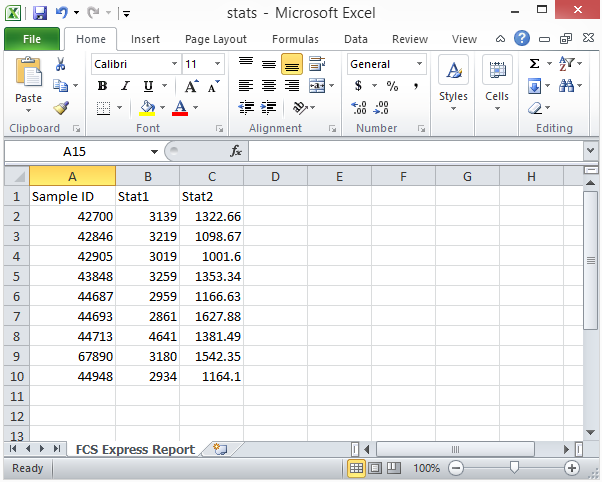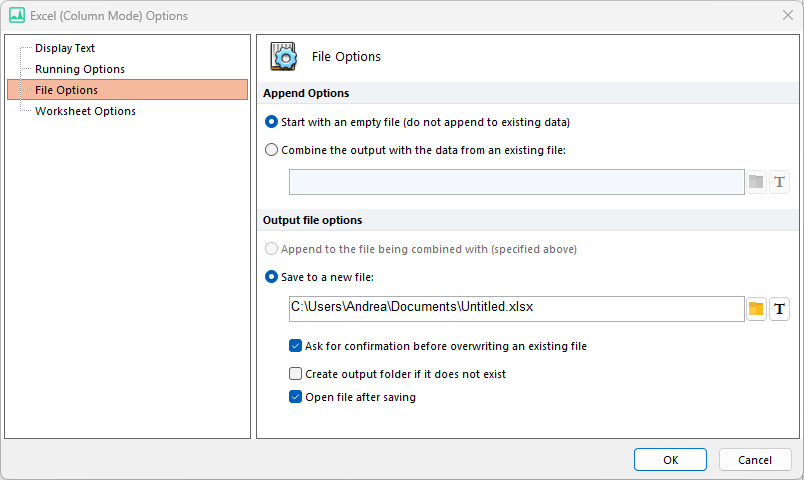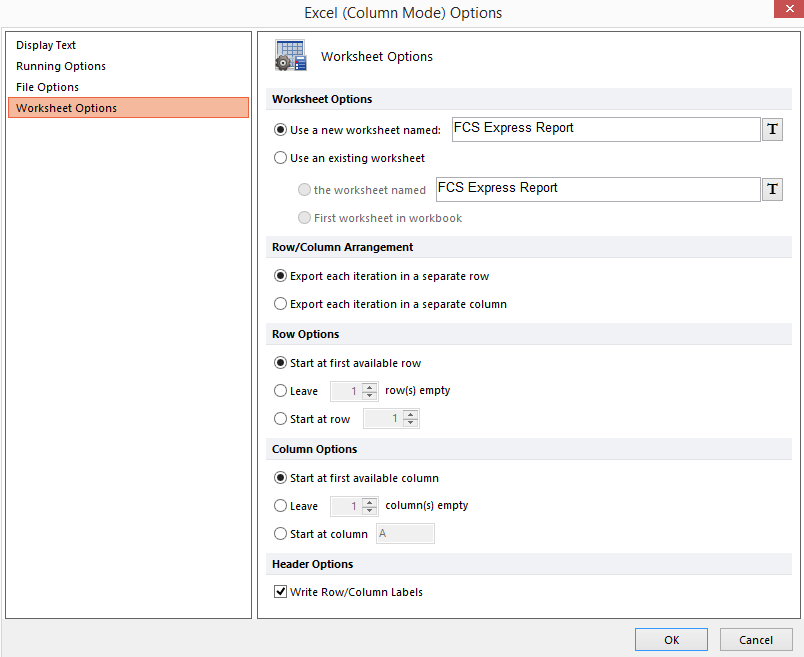Export to Excel (Column Mode)
With this type of Batch Actions you can export Regular Token (all available tokens, including Custom tokens), Statistic Token and Keyword Token directly into Excel.
By default, each token will be reported in its own column, while the values for each iteration will be reported in its own row. A transpose options is also available to switch columns and row (see Row/Column Arrangement below).
An example of the output of an Excel (Column Mode) report is shown in Figure 8.28.

Figure 8.28 Excel (Column Mode) Sample Report
Exporting items to an Export to Excel (Column Mode) is a two-step process:
1. Add the Export to Excel (Column Mode) to the Batch Actions list by selecting it from the Add Action drop-down menu of the Batch Actions and Reports window. A properties dialog will appear (Figure 8.29). Once the properties are set, the Export to Excel (Column Mode) action will be added to the list of Batch Actions.
2. Add the item(s) to be exported to the Export to Excel (Column Mode) (please see the Adding Items to Reports chapter).

Figure 8.29 Excel (Column Mode) File Options
Excel (Column Mode) Options dialog has four sections:
•File Options
This section (Figure 8.30) has two sub-sections:
oAppend Options
With the radio buttons, you can choose to:
▪Start with an empty file (do not append to existing data).
▪Combine the output with the data in an existing file. If you combine data from an existing file, FCS Express will join the Batch Processing output with the data that exists in the selected Excel file (.xls). The new data will be written to the same or to another worksheet based on the Worksheet Options (see below).
oOutput file options
With the radio buttons, you can choose to:
▪Append to the file being combined with (specified above). This option is only available when the Combine the output with the data in an existing file (see above) is selected. FCS Express will add the new data directly into the file being combined with.
▪Save to a new file. FCS Express will save the data (combined or not, based on the Append Options (see above)) into a new file (.xls). The file path and the filename can be defined (optionally using tokens). See Save Layout - File Options for a description of batch generated filenames.
Other options available in this sections are:
▪Ask for confirmation before overwriting an existing file
▪Create output folder if it does not exist
▪Open file after saving
•Worksheet Options
oWorksheet Options (Figure 8.31):
▪Use a new worksheet named. Data will be added to a new worksheet for which the name can be customized (optionally using a token) by the user.
▪Use an existing worksheet. The existing worksheet can either be the first worksheet of the workbook, or a worksheet with a specific name (the name can be defined by the user, optionally using a token).
▪radio buttons control whether iterations are exported as new columns or new rows within a document.
oRow Options and Column Options
Options allow users to define the position into the worksheet where FCS Express will start adding data. E.g.
▪Start at the first available row (or column)
▪Leave a specific number of rows (or columns) empty
▪Start at a specific row (or column)
oHeader Options
Allows FCS Express to automatically write the Field Label to the resulting Excel document. By default, this option is enabled.

Figure 8.30 Worksheet Options
